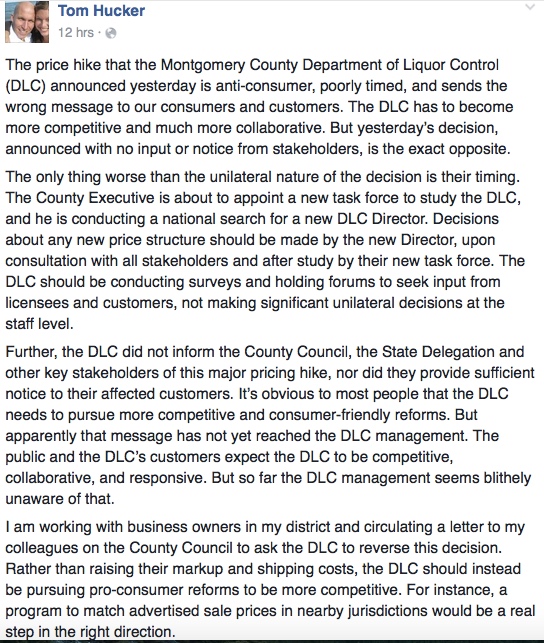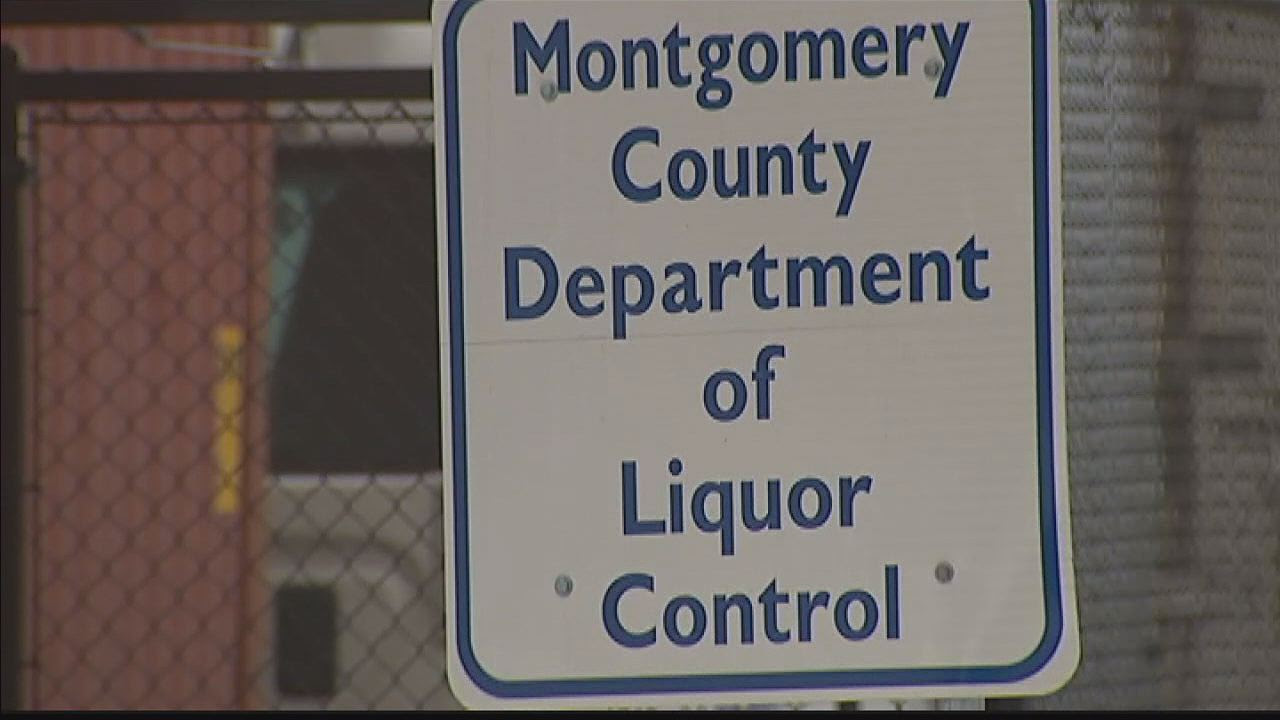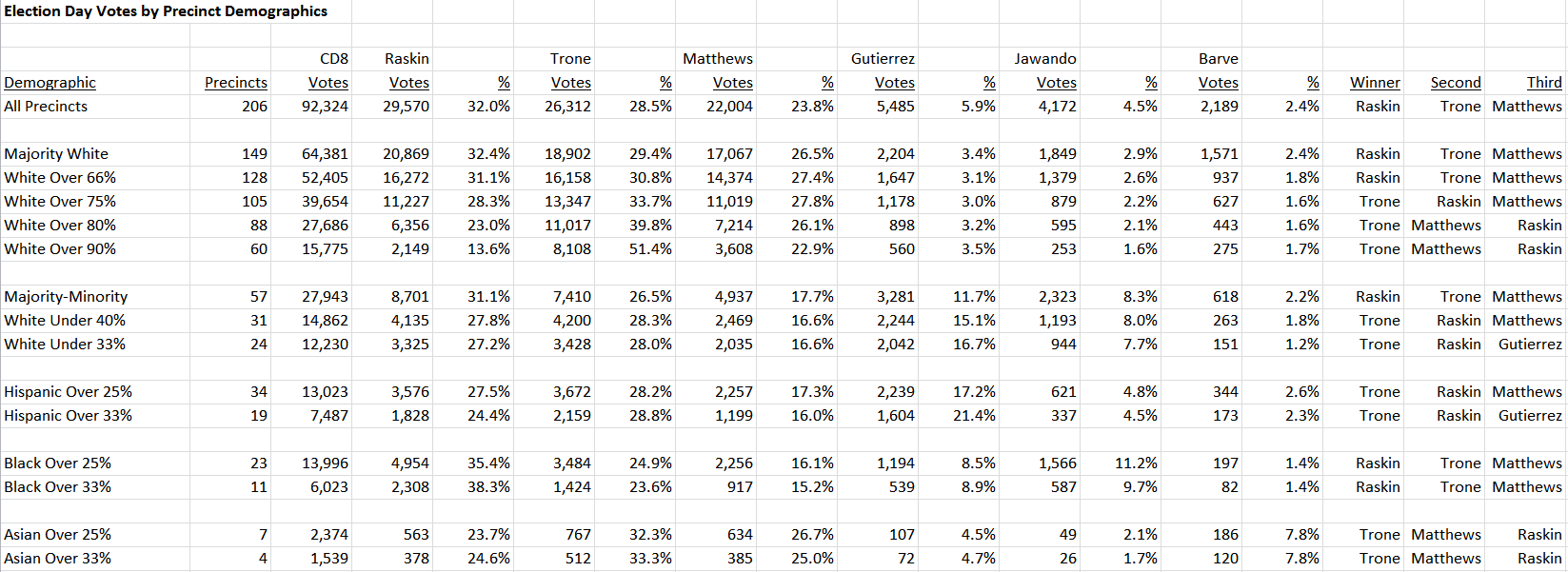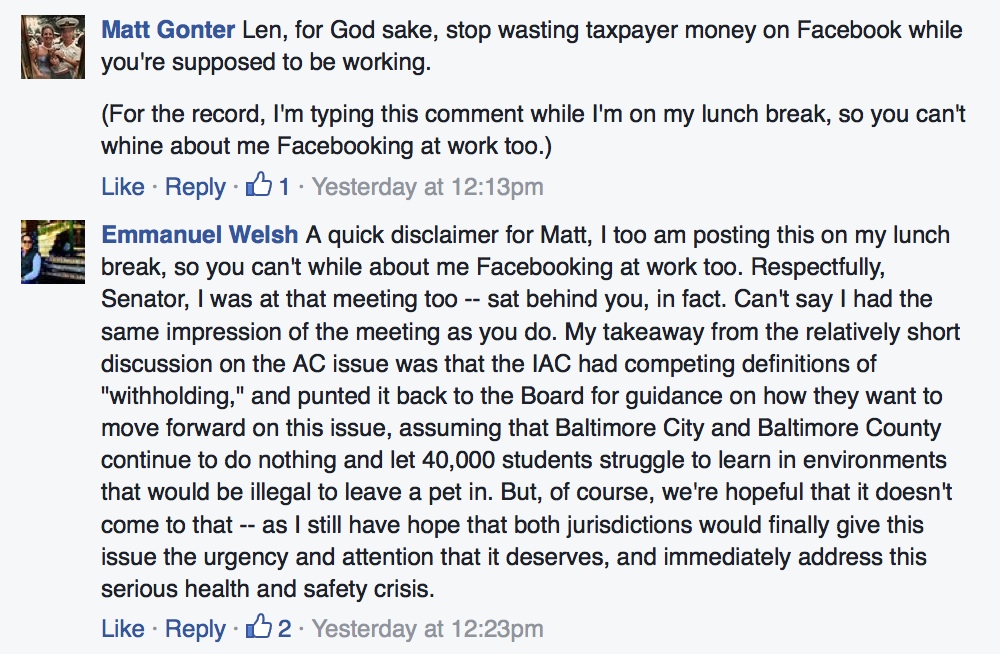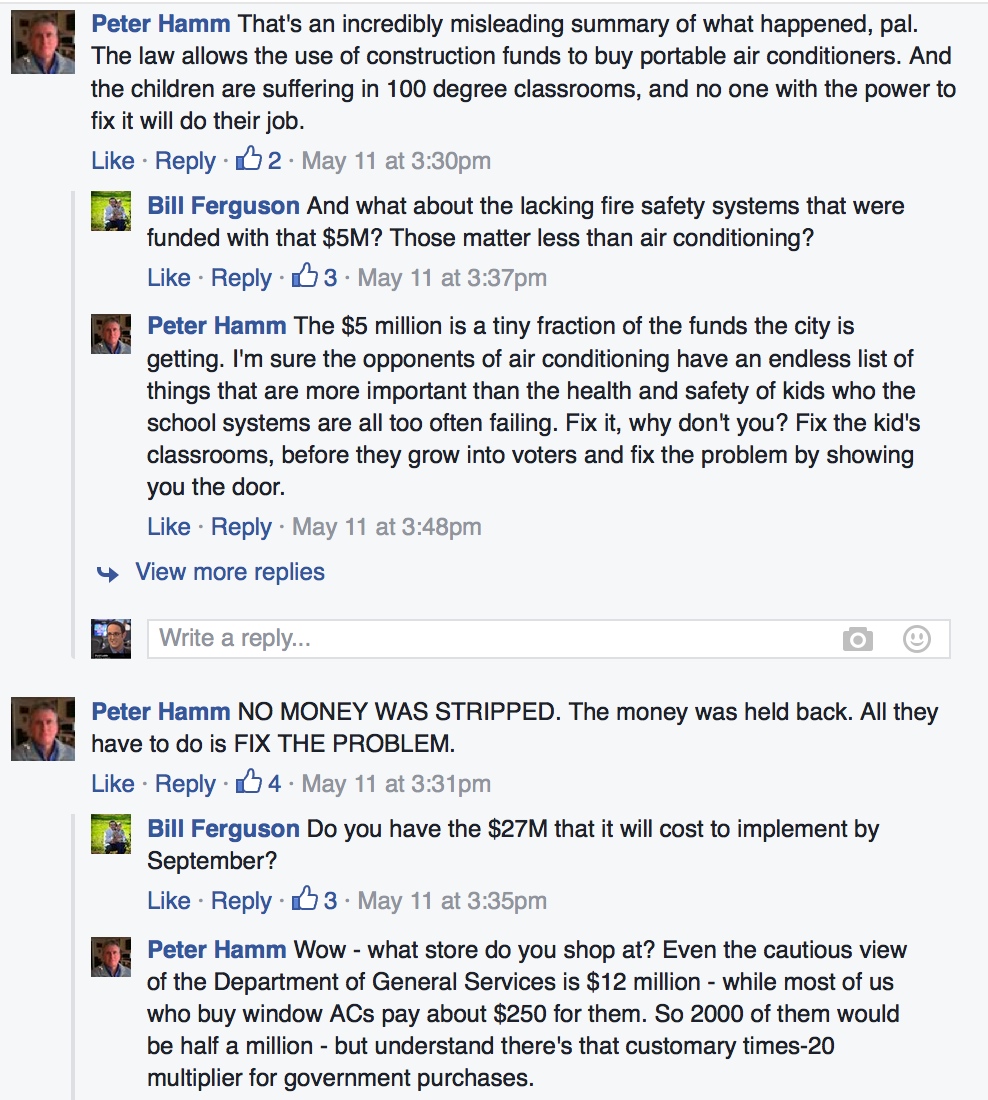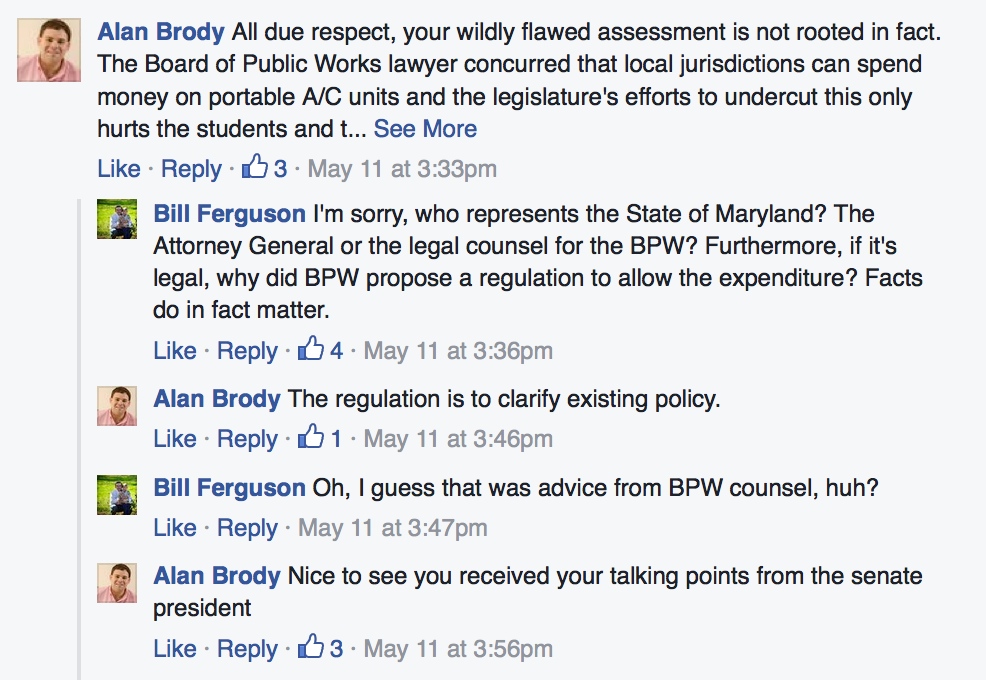Blogging will likely be light in June. Nevertheless, there will still be occasional posts, so either check back or subscribe to receive posts via your email. Thanks for reading!
Monthly Archives: May 2016
County Council Hopping Mad Over DLC Price Hike on Special Order Wines
Montgomery County Councimembers Tom Hucker and George Leventhal have objected vehemently to the Department of Liquor Control’s 10% price hike on special order wines. Both have been staunch defenders of the County’s liquor monopoly and amazed that the DLC is taking exactly the opposite approach advocated by the County earlier this year.
Here is George Leventhal’s email to DLC Acting Director Fariba Kassiri:
Dear Fariba,
Last year, the County Council unanimously recommended that special order beer and wine sales should be handled by the private sector. County Executive Leggett initially agreed to this recommendation, but then changed his mind and our state legislative delegation deferred to his wishes, so no change occurred to beer and wine sales in Montgomery County. Now, according to your message below, the county has decided that because special order beer and wine sales cost DLC substantially more to process, DLC will impose a substantial price hike on licensees for these products. This decision was made without informing the County Council ahead of time and without the benefit of any advice from a Task Force on Liquor Sales, which Mr. Leggett promised to appoint but has yet to appoint.Once again, DLC is acting in a manner that is adverse to the interests of the county’s restaurants and retail sector. I am disappointed in this decision and even more disappointed by the failure of the executive branch to take this issue seriously. The County Council’s Ad Hoc Committee on Liquor Control delved into the issue and came up with a compromise last year that would have preserved significant revenue to the county while freeing restaurants and retailers from the most onerous challenges of working with the county-controlled system. I am done apologizing for the failure of the executive branch to handle liquor sales responsively and efficiently. The responsibility for this failure rests squarely with Mr. Leggett.With great concern,George LeventhalMontgomery County Councilmember
Councilmember Tom Hucker issued a press release and also posted this on his Facebook page:
DLC 10% Price Hike on Special Order Wines
The General Assembly session is over and the Montgomery County Department of Liquor Control (DLC) is safe from competition for another year. As the DLC no longer has to make the case that its prices are competitive, it has decided to celebrate by raising prices by 10% on special order wines over $18 per bottle.
Essentially, this is a tax increase. The County is using its monopoly power to increase the price on these wines by 10%. Businesses have a choice of either eating the cost or passing it on to the consumer. In any case, the change flies in the face of Councilmember Hans Riemer’s much vaunted reform proposal to free up special orders. MoCo is moving in the other direction.
Justin McInerny of Capital Beer and Wine sent out the following notice in response yesterday:
DLC INCREASES SPECIAL ORDER WINE WHOLESALE PRICES EFFECTIVE JUNE 1, 2016
Hi Everyone,
DLC has announced effective June 1, 2016 wholesale prices for all wines will be 25% over DLC’s cost. This is a huge, costly and burdensome increase for those of us who focus on small production, family owned and operated vineyards. Currently, the mark ups are as follows on wine:
- 25% on special order wines whose cost to the DLC is under $18 per bottle,
- 35% over cost for stock wines and
- 15% for special order wines which wholesale for $18 per bottle.
Note that the percentage based markup is capricious and arbitrary to begin with. Shipping charges should not be based on how much an item costs. Shipping charges should be based on what it costs to ship the product. The DLC has no wholesale sales staff and originates no wholesale business. The DLC, like FedEx, is a delivery service which fulfils wholesale orders taken by third parties. A wine that wholesales for $10 per bottle costs the same to ship as a wine which wholesales for $12 per bottle.
I have made it easy for you to do something about this. Contact County Executive Leggett and the County Council members below and protest this decision.
You can also call County Executive Leggett directly 240-777-0311, the DLC runs under his supervision.
You can also call the Councilmembers directly or e-mail them directly through the County Council website here.
Thank you for your help.
CD8 Primary Election Results, Part Four
A guest blog by Adam Pagnucco.
Let’s put together the previous three parts and look in detail at the strengths and weaknesses of the top three candidates.
Senator Jamie Raskin
Strongest Performances
Takoma Park: 64.2% (1st)
Legislative District 20: 51.9% (1st)
Silver Spring Inside the Beltway: 49.9% (1st)
Inside the Beltway: 47.9% (1st)
Montgomery County Council District 5: 47.2% (1st)
Chevy Chase: 45.5% (1st)
Cabin John: 41.6% (1st)
Bethesda: 41.3% (1st)
Montgomery County Council District 1: 41.3% (1st)
Legislative District 16: 40.6% (1st)
Weakest Performances
Derwood: 11.0% (3rd)
Carroll County Total Votes: 12.0% (3rd)
Damascus: 12.5% (3rd)
Frederick County Total Votes: 12.7% (3rd)
White Population Over 90%: 13.6% (3rd)
Glenmont/Norbeck: 15.0% (4th)
The above areas illustrating Raskin’s greatest strengths have something in common: they are all totally or primarily inside the Beltway. (Most of the portion of Council District 1 that is outside the Beltway is in Congressional District 6.) The areas showing his greatest weaknesses also have something in common: they are all totally or primarily outside the Beltway, some of them a considerable distance outside. Raskin expanded his geographic base successfully since 74% of his votes came from outside District 20, but his votes began to dry out north of Norbeck Road. His 6.5 point victory was due to his ability to consolidate the vote in Downcounty precincts while pulling just enough votes from the north to prevent David Trone or Kathleen Matthews from winning.
David Trone
Strongest Performances
Carroll County Total Votes: 51.8% (1st)
White Population Over 90%: 51.4% (1st)
Frederick County Total Votes: 51.2% (1st)
Damascus: 44.9% (1st)
Montgomery County Council District 2: 41.5% (1st)
Legislative District 15: 38.6% (1st)
Derwood: 36.9% (2nd)
Glenmont/Norbeck: 36.1% (1st)
Potomac: 35.1% (1st)
Legislative District 14: 34.2% (1st)
Weakest Performances
Takoma Park: 11.7% (3rd)
Chevy Chase: 13.9% (3rd)
Inside the Beltway: 15.8% (3rd)
Legislative District 20: 16.8% (3rd)
Silver Spring Inside the Beltway: 17.0% (3rd)
Bethesda: 18.1% (3rd)
Montgomery County Council District 1: 18.4% (3rd)
Montgomery County Council District 5: 18.5% (2nd)
Legislative District 16: 19.3% (3rd)
Cabin John: 19.7% (3rd)
Trone’s strengths and weaknesses are the mirror image of Raskin’s. He lost to both Raskin and Matthews inside the Beltway, but as the precincts went farther north, Trone got stronger. Trone’s success in the northern Counties as well as Upcounty Montgomery will no doubt cause him to take a hard look at the Congressional District 6 seat should John Delaney run for Governor. Western Maryland accounts for a fifth of CD8’s Democratic primary voters, but in CD6, it accounted for roughly 40% of the vote in both the 2016 and 2014 Democratic primaries. One interesting thing not shown here: Trone was the leader in majority-minority, heavily Hispanic and heavily Asian precincts.
Kathleen Matthews
Strongest Performances
Derwood: 40.8% (1st)
Leisure World: 33.1% (1st)
Bethesda: 32.5% (2nd)
Legislative District 16: 32.3% (2nd)
Cabin John: 32.0% (2nd)
Chevy Chase: 32.0% (2nd)
Montgomery County Council District 1: 31.6% (2nd)
Weakest Performances
Takoma Park: 8.4% (3rd)
Silver Spring Inside the Beltway: 13.4% (3rd)
Blacks Over 33% of Population: 15.2% (3rd)
Montgomery County Council District 5: 15.2% (3rd)
Hispanics Over 33% of Population: 16.0% (4th)
Whites Under 40% of Population: 16.6% (3rd)
Majority-Minority Precincts: 17.7% (3rd)
Matthews finished second in most parts of CD8, which isn’t bad, but she finished first in just two local areas: Leisure World and Derwood, which has only one precinct in the district. If she had also finished first in, say, Bethesda and Chevy Chase, she might have gotten close, but Raskin owned the areas inside the Beltway. Matthews told the Washington Post that she was thinking of running for local office in the future. Here’s an idea for her: in a County Council at-large race, the top four vote-getters triumph. A candidate who finishes second everywhere would be a lock to win.
Now here’s an interesting thought. With Raskin going to Congress, Matthews thinking about running again and Trone not ruling it out either, could all three of them ultimately be in office after the next election?
CD8 Primary Election Results, Part Three
A guest blog by Adam Pagnucco.
The data below combines precinct information with census tract data on Hispanic origin and race from the 2010 Decennial Census. The demographics of the three counties are very different. Of the 67 precincts in Carroll and Frederick Counties, 63 had populations that were at least 90% white. Of the 139 precincts in Montgomery County, 57 were majority-minority. These differences influence the presentation below.
Here are the results for precincts by their population percentages in different demographic categories.
At first glance, the data shows a seeming contradiction. Trone led in precincts with populations over 75% white. But Trone also led in precincts with less than 40% white populations. How can this be? The former fact is explained by Trone’s victory in the overwhelmingly white precincts of Carroll and Frederick. The latter fact is explained by Trone’s wins in Gaithersburg, Glenmont/Norbeck and parts of Rockville, which are racially diverse. Trone also finished a close second in Wheaton and Silver Spring East County. While Senator Jamie Raskin won big in diverse precincts in Takoma Park and Silver Spring Inside the Beltway, he also won in predominantly white Bethesda, Cabin John, Chevy Chase and Kensington. Delegate Ana Sol Gutierrez was a factor in Glenmont/Norbeck (Zip Code 20906 excluding Leisure World), finishing second in the nine precincts there. She finished third in the 19 precincts with at least 33% Hispanic populations.
We will have a summary of the candidates’ performance in Part Four.
CD8 Primary Election Results, Part Two
A guest blog by Adam Pagnucco.
It’s time to dig deeper on geography. Below are election day results for every state legislative district overlapping with Congressional District 8.

Of the twelve legislative districts sharing precincts with CD8, David Trone won nine of them. Predictably, he won the five legislative districts in Carroll and Frederick Counties, and he got majorities in three of them. He also won the precincts in Districts 14, 15, 17 and 19. Senator Jamie Raskin won the precincts in Districts 16, 18 and 20, but those three accounted for 58% of election day votes. No other candidates won any legislative districts.
A note about District 20, Raskin’s home base. He received 52% of its votes, which was a lower percentage than Trone received in three northern legislative districts. Seventy-four percent of Raskin’s election day votes came from outside District 20, meaning that he succeeded in diversifying his geographic base – primarily to other precincts inside the Beltway. Raskin received more votes from District 16 than from District 20.
Here are the same results for county districts.

Again, Trone won every county district in Carroll and Frederick. But he also won the precincts in Montgomery County Council Districts 2, 3 and 4. Raskin won the precincts in Montgomery County Council Districts 1 and 5, and those two districts accounted for 54% of election day votes.
Here are the results for towns in Carroll and Frederick Counties.
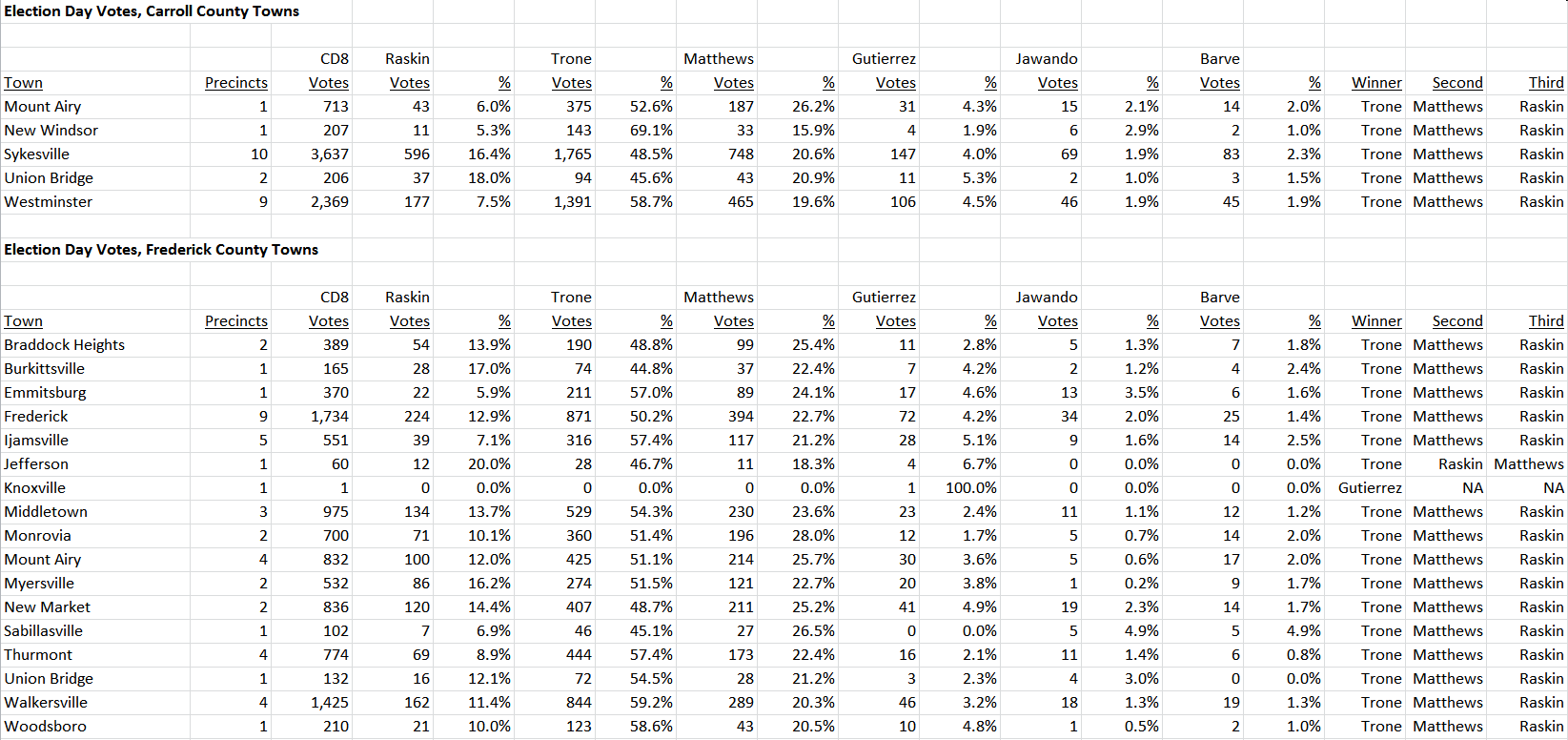
Trone got a clean sweep here with one exception: in one precinct in Knoxville (Frederick County), one vote was cast and it went to Delegate Ana Sol Gutierrez. In every other case, the rank order was Trone first, Matthews second and Raskin third.
Now here are the results for towns in Montgomery County. Wheaton is defined as Zip Code 20902. Glenmont/Norbeck is defined as Zip Code 20906 except for Leisure World, which is separated out. Silver Spring (East County) is defined as Silver Spring precincts not in Zip Codes 20902 or 20906 and located outside the Beltway.
These results are much more diverse. Of the fifteen towns in Montgomery, Raskin won eight: Bethesda, Cabin John, Chevy Chase, Kensington, Silver Spring (East County), Silver Spring (Inside the Beltway), Takoma Park and Wheaton. No other candidate won a town inside the Beltway. Kathleen Matthews won Leisure World and Derwood, which had just one precinct. Trone won Damascus, Gaithersburg, Glenmont/Norbeck, Potomac and Rockville. Delegate Ana Sol Gutierrez finished second in Glenmont/Norbeck, an area with a substantial Latino population. The local data in Montgomery supports the narrative that Raskin’s victory was supported primarily by Inside the Beltway voters, and he rounded up enough votes from other places to prevent either Trone or Matthews from breaking through.
We will look at precinct demographics in Part Three.
Franchot’s Staff Troll Ferguson on Facebook
Hogan and Franchot Get Ready for the Cameras
Governor Larry Hogan and Comptroller Peter Franchot have been grandstanding in fine fashion lately. They are both outraged that Baltimore County and City are not installing air conditioning fast enough throughout the school system.
Hogan has more control over the budget than any other governor in the nation. He could have easily included the money for A/C in the budget without an iota of opposition but chose not to do so. Instead, he has set up a grandstanding moment with Franchot to deny the City and County monies needed for other school projects until they agree to install A/C in one year.
They kindly dumped the decision of what other projects the City and County should forego for the A/C on the Maryland School Construction Committee (IAC). Normally, this Committee reviews local projects to make sure they are ready to go and comply with other complex state requirements. Local governments determine which projects are needed in line with the Republican principle of local control – something that has gone out the window here.
Former Sen. and IAC Member Barbara Hoffman is shrewd and nobody’s patsy. She said correctly that this wasn’t the Committee’s job and moved to pass the job back to Hogan and Franchot on the Board of Public Works, who are eager to take credit for A/C but don’t want to explain why they are nixing taking care of problems like unsafe drinking water, fire safety and collapsing roofs. Even Hogan’s representatives on the Board voted for Hoffman’s motion.
Baltimore County Executive Kevin Kamenetz has gone one better and agreed to speed up the A/C but on the condition that the State reimburse the County for its share. Will Hogan and Franchot put their money with their mouths and agree to Kamenetz’s plan? Or will they demand that the County install A/C but not fix other very serious problems important to student safety?
Franchot’s Facebooking Staff
Meanwhile, Franchot’s staff seems to have little else to do but harry Sen. Bill Ferguson (D-Baltimore City) on Facebook for standing up for his jurisdiction’s priorities. Montgomery’s state legislative delegation doesn’t try to reorder our County’s priorities either.
Here is Len Foxwell, Franchot’s Chief of Staff, interrogating Sen. Ferguson during normal business hours:
Apparently, Deputy Chief of Staff Emmanuel Welsh also has time to attack Ferguson on his Facebook page:
I suppose Communications Director Peter Hamm is arguably doing his job by spending time on Facebook taking potshots at Sen. Ferguson:
And here is more of Chief of Staff Foxwell:
Communications Director Peter Hamm condescendingly calls Sen. Ferguson “pal” on Facebook. Proof, once again, that you may grow up but adolescence is forever.
Press Secretary Alan Brody is also getting in on the fun:
I never understand why politicians, let alone their staff, go after other politicians on Facebook pages besides their own. It rarely looks good.
Council Provides Crucial Funds for Public Campaign Finance
The following is a press release from Fair Elections Maryland:
Montgomery County Increases Investment in Groundbreaking Fair Elections Program
(Rockville) – Today the Montgomery County Council made a critical investment in democracy by adding $5 million to its public election fund in its FY2017 budget. While this amount is only a fraction of a fraction of a fraction of the County’s overall budget, it represents a real commitment to amplifying the voices of small donors in county politics and diluting the influence of wealthy special interests. With adequate funding, the program will be up and running for the next county elections, encouraging more voters to participate in county elections and providing opportunities for a wider range of candidates to run for office.
A citizens’ task force suggested $10 million is needed for the program to succeed and recommended a $4 million installment for FY17, but County Executive Ike Leggett only included $1 million in his FY17 budget. The $4 million, added to the Executive’s $1 million and the existing $1 million from FY16, puts the Public Campaign Fund on track to be fully funded and successful.
“Montgomery County made history by creating the first program in Maryland for small-donor fair elections,” said Jennifer Bevan-Dangel, executive director of Common Cause Maryland. “We praise the action Council took today. They showed strong support for this critical program, and backed up their words with strong action.”
“In our democracy, the depth of your pocket should not dictate the volume of your voice,” said Maryland PIRG Director Emily Scarr. “We’re thrilled that the Montgomery County Council increased their commitment to getting big money out of local elections by making strong investment in their small donor matching program.”
“There is no doubt that national eyes are on this program in Maryland. By putting small donor incentives into action in Montgomery County, the public will get to see the effectiveness of the program, building the support and track record we need to pass state and federal reforms,” said Larry Stafford, Director of Progressive Maryland.
Concerned citizens had testified at the budget hearings and made hundreds of emails and calls into Council office asking the County Council to put $4 million into the budget to fund the fair elections program.
In a small donor fair elections system, candidates for County Council or County Executive who turn down large contributions and contributions from special interests can receive limited matching funds for small contributions from their county. Candidates must qualify to participate in the program by showing strong support from citizens in their district.
# # #
Fair Elections Maryland includes Common Cause Maryland, Progressive Maryland, League of Conservation Voters, Every Voice, Maryland PIRG and many more state and local organizations who support good government.
CD8 Primary Election Results, Part One
A guest blog by Adam Pagnucco.
It has been roughly three weeks since Maryland’s primary election on April 26 and most of the results are in. All jurisdictions have reported returns from early voting, election day, absentee ballots and provisional ballots and unofficial precinct-level data files have been released. While the City of Baltimore’s results have some problems, they are not relevant to Congressional District 8. The time for a data crunch has arrived.
First, let’s examine the overall results.

Senator Jamie Raskin was the leader in early votes, election day votes and absentee and provisional ballots, but his leads were of different magnitudes. Raskin won early votes by 16.1 points, a far larger margin than his wins in absentee and provisional votes (7 points), total votes (6.5 points) and election day votes (3.5 points). As we proceed to analyze precinct votes on election day, let’s recognize that they underrate Raskin’s strength relative to the total vote count.
Here are total votes and election day votes by county for the top six candidates.

David Trone won an absolute majority of both total votes and election day votes in Carroll and Frederick Counties, but they comprised about a fifth of the electorate. Raskin won Montgomery County by 13.7% in total votes and 12.3% on election day. Kathleen Matthews placed second in all three counties.
This partially obscures the story of geography at a macro level. Consider the following three areas: precincts inside the Beltway, precincts outside the Beltway and still in Montgomery, and Carroll and Frederick together.

Raskin won the Inside the Beltway precincts by 23.7% over Matthews, and since these are just election day votes, that probably understates his margin. But in the Outside the Beltway Montgomery precincts, Raskin and Trone were basically tied while Trone won the northern counties handily. Interestingly, more Montgomery County votes came from outside the Beltway than inside, but because Raskin had such huge support from inside precincts, he was able to withstand his opponents’ performance in other areas.
We will have a finer cut on geography in Part Two.
LCV Supports Funding for Public Financing of MoCo Elections
Today, I am pleased to present a guest post from Karla Raettig, the Executive Director of the Maryland League of Conservation Voters.
A clean environment depends on clean elections. That’s why the Maryland League of Conservation Voters is urging the Montgomery County Council to allocate enough funds to ensure that the County’s publicly funded elections program succeeds. Two years ago, the Council unanimously established this voluntary system by which eligible candidates for County Executive and County Council can receive matching public dollars for their campaigns. To prove eligibility, candidates must first meet a reasonable threshold of low-dollar donations from individuals in their district, and agree not to accept contributions from corporations, PACs, or labor unions. All donations are capped at $150—as a result, the voices of small donors are empowered, and the playing field is leveled with wealthy special interests.
In jurisdictions from Hawaii to Maine, similar programs have proven effective in diluting the influence of wealthy special interests; refocusing legislators’ attention away from outside, moneyed interests and onto their constituents; improving democratic participation; and promoting greater diversity of candidates, including helping to elect women, minorities, and individuals from less affluent backgrounds.
In order for the program to succeed, however, it must be fully funded for the upcoming County elections. According to the recommendation of an independent task force of Montgomery County citizens, the Council needs to allocate $10 million over a four-year cycle—a fraction of the overall budget. Unfortunately, only $1 million has been set aside so far. Next week, the full Council will discuss whether to accept the recommendation by the Government Operations Committee to allocate $4 million in the FY ’17 budget for the program.
Maryland LCV strongly urges the full Council to accept the recommendation of Councilmembers Katz, Navarro, and Riemer.
Whether it’s federal, statewide, or county races, money is dominating the election process. Self-funded candidates are breaking records. Real estate, developer interests, and lobbyists are giving millions. And yes, even groups like Maryland LCV are in the campaign donation game. But our organization supports a system of public finance over the status quo that favors wealthy special interests over the voice of the voters. We know that voters care about climate change, about the safety of their drinking water and the quality of the air they breathe. It’s precisely these voters whose voices we’d like to see elevated in the electoral process.
According to New York University School of Law’s Brennan Center for Justice, “campaigns funded principally or entirely by private contributions distort democracy and pull elected officials away from the interests of ordinary, often unorganized citizens.”
It’s time to reduce wealthy special interest influence on our electoral process and equalize the playing field, and Montgomery County is the right place to start. Two years ago, the Montgomery County Council showed they are true leaders in working towards fair elections. Now, they must stay the course and ensure the program is fully funded for success.

